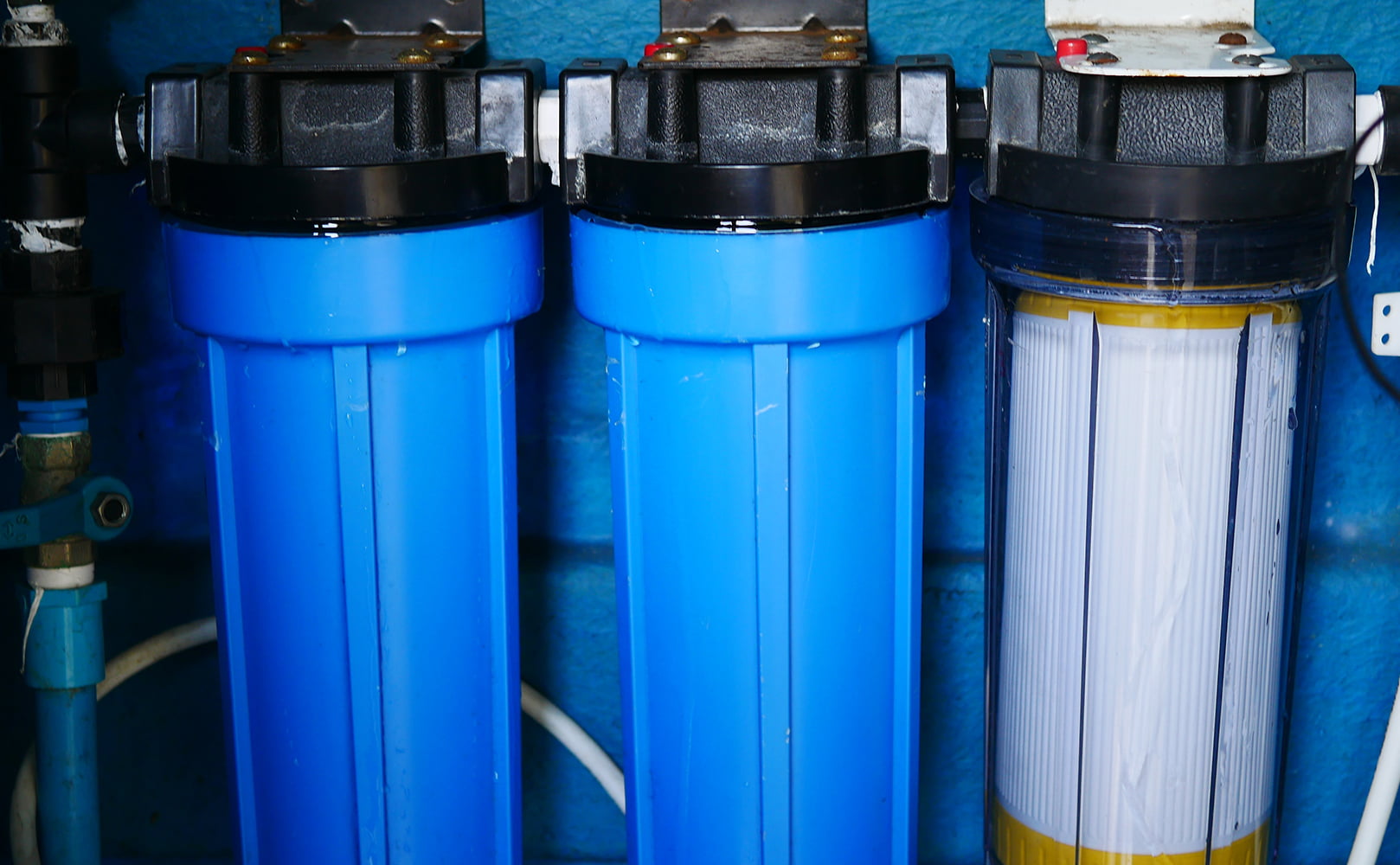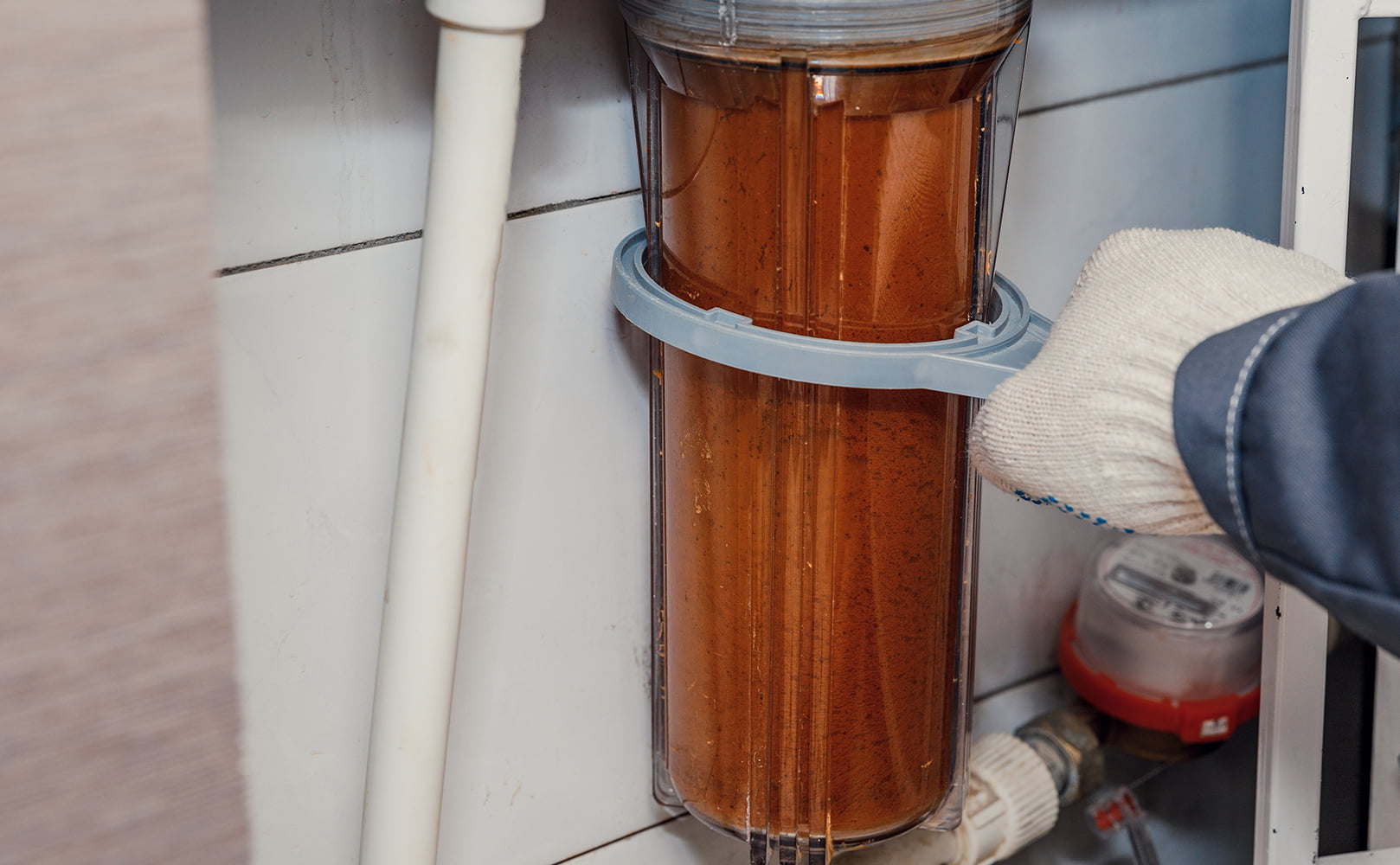Whole House Water Filtration System Maintenance & Service Guide
Written by: Alexandra Uta // Last Updated: May 12, 2023
This page may contain affiliate links. If you buy a product or service through such a link we earn a commission at no extra cost to you. Learn more.
Like any other system, your whole house water filter will work best and last longer if properly maintained.
Failing to maintain a whole house filter can lead to costly repairs or even cause health hazards.
In this guide, we’ll cover everything you need to know about maintaining your whole house water filter, including some tips and tricks.
Key Takeaways
You should replace cartridge-based whole house filters at least once every 3 to 12 months.
Regular replacement is essential to prevent compromising the water quality at your home.
Below are the general steps to replacing a whole house water filter cartridge:
- Close the water supply, drain all water, and release the pressure inside the system.
- Unscrew the filter housing.
- Remove the old filter element.
- Check the O-ring.
- Insert the new cartridge and reinstall the housing.
- Turn the water supply back on and check for leaks.
Aside from replacing filter cartridges, cleaning the housing unit with a gentle cleaning solution every once in a while is a good practice.
Replacing a Whole House Water Filter
A basic maintenance move for your whole house water filter is to replace it every now and then. For this article, we will explain how to replace cartridge-based whole house water filters only. If your whole house water filter uses a large tank filled with filter media, these steps may not apply.
In general, replacing cartridge-based whole house water filters involves draining the system and changing the cartridges. In some cases where the filter starts leaking after replacement, checking the connections may be part of the process.
What You Need
Before replacing your whole house water filter, make sure you have these materials ready:
- the correct replacement cartridge for your system,
- an adjustable wrench,
- and a bucket.
Now, you can begin the replacement procedure.
1. Close the Water Supply
The first step is to close the water supply leading to your whole house water filter. This will prevent any water from entering the system while you are working on it. To do this, close the valve at the main water line.
2. Drain the Remaining Water
Once the water supply is cut off, open the nearest water outlets to your whole house water filter to drain the remaining water in the system.
3. Press the Pressure Relief Button
On most cartridge-based whole house water filters, there is a pressure relief button that you need to press in order to release the built-up pressure inside the system. This will make it easier for you to open the filter housing.
4. Unscrew the Housing
After releasing the pressure, unscrew the housing with your filter wrench and remove it. At this point, you’ll want to have a bucket ready to catch any spilling water.
5. Remove the Old Cartridge
Carefully remove the old cartridge from the housing and dispose of it properly. Some cartridges can be cleaned and reused, but in most cases, it’s best to just replace them.
6. Lubricate the O-ring
Before inserting the new cartridge, apply a thin layer of silicone grease to the O-ring. This will help create a watertight seal and prevent any leaks. However, if the O-ring is already deformed, replace it instead.
7. Place the New Cartridge
Insert the new whole house water filter cartridge into the housing and screw on the housing tightly. Make sure not to overtighten it as this can damage the O-ring.
8. Turn the Water Supply Back On
Once the housing is secure, turn the water supply back on and open all the faucets in your home to flush out any air bubbles. Close the water outlets once the flow rate returns to normal.
In Case of Leaks
If your whole house water filtration system starts leaking after replacing a filter cartridge, the first thing you should do is check the housing to make sure it’s screwed on properly. If it is, then the problem may be with the O-ring. In this case, you will need to remove the housing and lubricate the O-ring again before screwing it back on.
Replacement Schedule
How often you should replace your whole house water filter depends on the model of filter you have, the quality of your water, and how much water your household uses.
As a general rule of thumb, most cartridge-based whole house filters should be replaced every 3 to 6 (12) months. If you live in an area with particularly hard water or sediment-filled water, you may need to replace your filter more frequently.
You can usually tell that it’s time to replace your filter when the flow of water from your taps slows down noticeably. When in doubt, check your manufacturer’s manual for information on replacement.
What Happens If You Don’t Replace Your Whole House Water Filter?
Whole house water filters are designed to remove impurities from your water supply. These range from large particles like sediment and rust bits to smaller contaminants like chlorine and lead. Over time, the filter media will become clogged with these impurities, reducing its ability to effectively clean your water.
If you don’t replace your whole house water filter regularly, your water quality may be affected. For example, your water may start to have a strange taste or odor. Additionally, the flow rate of your water may decrease as the filter becomes clogged. In extreme cases, you may even start to see additional contaminants in your water if the filter is not replaced.
Other Basic Whole House Water Filter Maintenance Tasks
Aside from replacing your whole house water filter, consider doing these other tasks to maintain the system.
Regular Cleaning Routine
Your whole house water filter will work more efficiently if it is regularly cleaned. About once a year, remove the housing unit and clean it with any gentle cleaning product and warm water. If your model has a sediment pre-filter, be sure to clean that as well.
Maintenance Before a Vacation
If you are going away for an extended period of time, you should turn off your filtration system. You don’t want to come back home to a burst water filter due to a clog that formed or pressure that built up while you were away. Even if your system has a pressure-limiting valve, it’s best not to take that risk.
Tips and Tricks
How to Prevent an Outdoor Whole House Water Filter from Freezing
If your whole house water filter is located outdoors, you should take measures to prevent the system from freezing, especially during the cold weather. Freezing can damage the filter housing and cause leaks. To prevent freezing, you can do one or more of the following:
- Drain the system and remove all hoses before cold weather arrives
- Wrap the system in insulating material such as a tarp or blanket
- Move the system to a warmer area
Schedule Routine Inspections
It is important to schedule routine inspections of your whole house water filter. During these inspections, you should clean filter housings, check for leaks, and inspect the condition of the filter cartridges. Depending on how much water is used, you may need to do this every few months or once a year.
If you have any questions about whole house water filtration system maintenance please don’t hesitate to leave a comment below!
Information provided on BOS is for educational purposes only. The products and services we review may not be right for your individual circumstances.
We adhere to strict editorial guidelines. Rest assured, the opinions expressed have not been provided, reviewed, or otherwise endorsed by our partners – they are unbiased, independent, and the author’s alone. Our licensed experts fact-check all content for accuracy. It is accurate as of the date posted and to the best of our knowledge.



